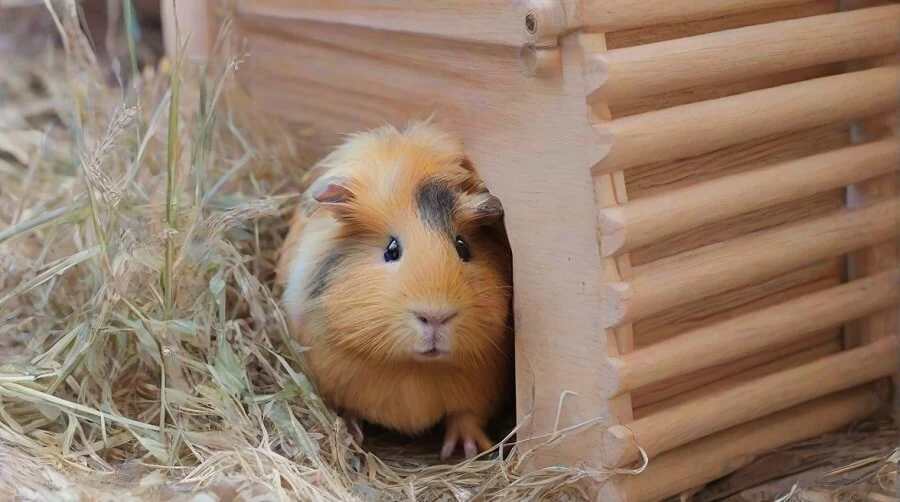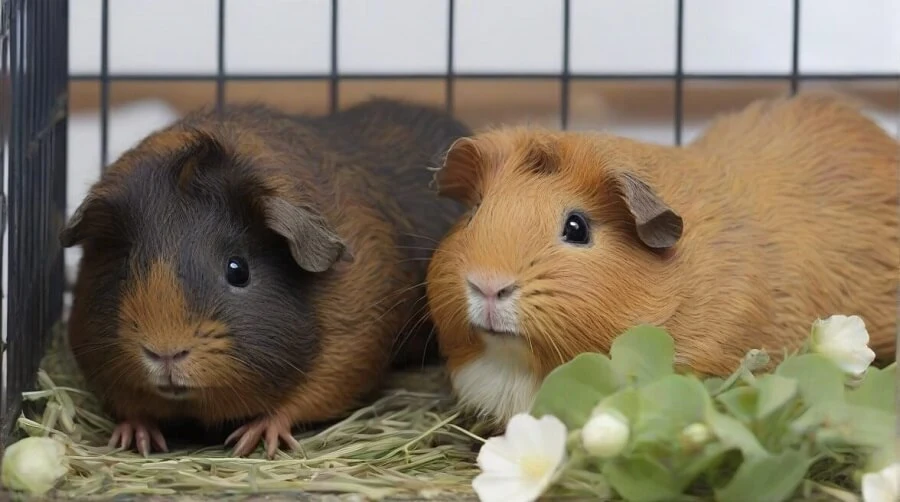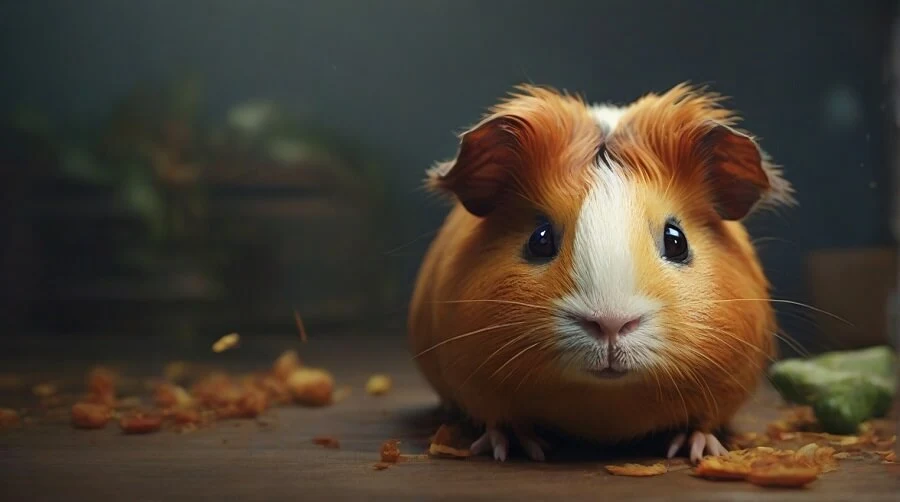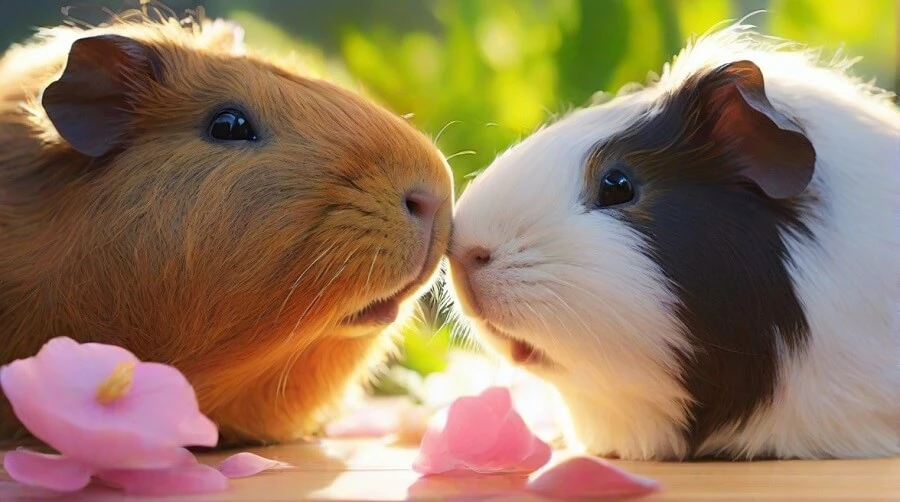Building a strong bond with your guinea pig goes beyond just providing basic care; it’s about unlocking a world of joy and understanding. This comprehensive guide will be your roadmap to how to socialize a guinea pig and unlock the full potential of your relationship.
Through insightful steps and practical advice, you’ll discover how to create a comfortable and engaging environment, foster positive interactions, and build trust with your furry companion. From understanding their unique communication cues to offering enriching activities, you’ll be equipped to foster a vibrant and fulfilling relationship with your guinea pig.
The Importance of Socialization
Just like humans, guinea pigs are social animals who crave interaction and companionship. A lack of socialization can lead to loneliness, boredom, and even behavioral problems. By actively engaging with your furry friend, you can reap numerous benefits, including:
- Reduced stress and anxiety: Social interaction releases endorphins, promoting feelings of happiness and well-being.
- Enhanced mental stimulation: Engaging in play and interactive activities keeps your guinea pig’s mind sharp and prevents boredom.
- Improved physical health: Regular exercise and interaction help your guinea pig stay active and maintain a healthy weight.
- Strengthened bond: Spending quality time with your guinea pig builds trust and strengthens your emotional connection.
Understanding Your Furry Friend: A Glimpse into Guinea Pig Communication
Guinea pigs communicate in a variety of ways, including:
- Vocalizations: From happy chirps and purrs to teeth chattering and growls, each sound conveys a specific message.
- Body language: Observing postures, ear position, and eye contact can provide valuable insights into their moods and intentions.
- Scent marking: Guinea pigs use scent glands to mark their territory and communicate with other guinea pigs.
Learning to interpret these signals is crucial for fostering a positive and harmonious relationship. By understanding your guinea pig’s communication methods, you can better respond to their needs and build a deeper connection.

Creating a Safe and Comfortable Environment
Building a Sanctuary: The Importance of a Guinea Pig’s Home Base
Before embarking on your socialization journey, it’s crucial to create a haven for your guinea pig. A safe and comfortable environment will foster a sense of security and encourage positive interactions. Here are some key elements to focus on:
Providing Ample Space and Hiding Places
Guinea pigs are naturally curious and active creatures. Their cage should be spacious enough for them to explore, exercise, and engage in natural behaviors like popcorning and zoomies. Consider investing in a multi-level cage or providing additional outside playtime.
Beyond ample space, your guinea pig requires ample hiding places. This could include tunnels, hidey houses, or even cardboard boxes. Providing these havens allows them to retreat when they feel overwhelmed or stressed, contributing to their overall well-being.
Enriching Your Guinea Pig’s World
Boredom can be detrimental to a guinea pig’s physical and mental health. To keep them engaged, offer a variety of toys and enrichment activities. These could include:
- Chew toys: Wood, hay cubes, and mineral chews help maintain their dental health and provide a natural outlet for their chewing instinct.
- Forage toys: Balls filled with hay or treats encourage natural foraging behavior and stimulate their minds.
- Tunnels and tubes: These provide opportunities for exploration and exercise, keeping your guinea pig active and entertained.
- Safe objects to explore: Empty cardboard boxes, paper bags, and crumpled paper offer new textures and smells, sparking their curiosity and providing entertainment.
To learn more about this subject read Signs Your Guinea Pig Might Be Bored (And How To Fix It!)
Maintaining a Clean and Hygienic Environment
Regular cleaning of your guinea pig’s cage is crucial for maintaining their health and preventing the spread of diseases. Remove soiled bedding daily and thoroughly clean the entire cage at least once a week. Use safe and pet-friendly cleaning products and ensure the cage is completely dry before returning your guinea pig.
Creating a Routine
Guinea pigs are creatures of habit. Establishing a routine for feeding, playtime, and cleaning provides a sense of stability and comfort. This predictability reduces stress and helps them anticipate positive interactions, fostering a more harmonious environment.
By investing in a spacious cage, providing enrichment activities, and maintaining a clean and routine-based environment, you can create a sanctuary for your guinea pig. This haven sets the stage for successful socialization and lays the foundation for a thriving relationship.

Gradual Introduction and Positive Reinforcement Techniques
Building Trust: The Art of Gradual Introduction and Positive Reinforcement
Now that you’ve created a safe and comfortable haven for your guinea pig, it’s time to embark on the exciting journey of building a strong bond. Here, we delve into two crucial aspects of successful socialization:
Gradual Introduction: Laying the Foundation for a Positive Relationship
Whether introducing your guinea pig to another guinea pig or yourself, it’s imperative to take things slow and steady. Sudden changes can be overwhelming and stressful, hindering their ability to adapt and build trust. Here’s how to approach introductions gradually:
- Neutral space: Begin by introducing your guinea pig to a neutral environment outside their cage. This eliminates territorial instincts and allows them to explore each other without feeling threatened.
- Barrier introduction: Initially, allow them to sniff each other through a barrier, such as a mesh divider or cage wire. This helps them get used to each other’s scent and presence gradually.
- Supervised interactions: Once they seem comfortable, allow supervised face-to-face interactions. Monitor their behavior closely and intervene if any signs of aggression or fear arise.
- Patience is key: Remember, building trust takes time and patience. Don’t rush the process and allow your guinea pig to set the pace.
Positive Reinforcement: Rewarding Good Behavior
Positive reinforcement is a powerful tool for shaping behavior and building positive associations. By rewarding desired behaviors with treats, praise, and gentle petting, you encourage your guinea pig to associate interaction with positive experiences. This strengthens their trust and encourages further engagement.
Here are some ways to incorporate positive reinforcement:
- Hand feeding: Offer your guinea pig treats from your hand to help them associate your presence with positive experiences.
- Interactive play: Engage in fun activities like offering food puzzles or playing with toys. This creates positive memories and strengthens your bond.
- Verbal praise: Talk to your guinea pig in a soothing voice and use positive affirmations to create a sense of comfort and security.
- Gentle handling: Pet your guinea pig gently and avoid sudden movements or loud noises. This builds trust and allows them to feel safe in your presence.
By employing positive reinforcement techniques consistently, you can create a foundation of trust and foster a strong bond with your guinea pig. Remember, patience, consistency, and positive interactions are key to unlocking the joy of a fulfilling relationship.

Recognizing Signs of Stress, Handling Techniques, and Bonding Activities
Navigating Emotions: Recognizing Stress and Building a Strong Bond Through Play
As you continue your socialization journey, understanding your guinea pig’s emotional state is crucial. By recognizing signs of stress, you can address their needs and create a more positive and comfortable environment for them.
Identifying Stress Signals
Pay close attention to your guinea pig’s body language and behavior. Common signs of stress include:
- Hiding: If your guinea pig spends excessive time hiding, it could indicate they feel unsafe or overwhelmed.
- Teeth chattering: This rapid chattering sound is a sign of anxiety or fear.
- Hair standing on end: Piloerection, also known as “furrowing,” is a defense mechanism triggered by stress or fear.
- Wheezing or squeaking: These vocalizations can indicate discomfort or distress.
Addressing Stress and Promoting Comfort
Once you identify signs of stress, take steps to address the cause. This might involve:
- Providing more hiding places: Ensure your guinea pig always has access to safe havens where they can feel secure.
- Reducing noise and activity: Limit loud noises and sudden movements to create a calmer environment.
- Offering familiar objects: Provide familiar bedding, toys, or smells to help them feel comfortable.
- Seeking professional advice: If your guinea pig’s stress persists, consult a veterinarian or animal behavior specialist.
Building Trust Through Handling and Play
Beyond recognizing stress, learning to handle your guinea pig properly and engage in fun activities is essential for building a strong bond.
Handling Techniques
- Approach slowly and calmly: Avoid sudden movements and let your guinea pig sniff your hand before attempting to pick them up.
- Support their body: Always cup your hand underneath their chest and hindquarters to provide full support.
- Hold them securely but gently: Avoid squeezing or holding them too tightly.
- Respect their boundaries: If your guinea pig shows signs of discomfort, let them down immediately.
Bonding Activities
- Lap time: Cuddle your guinea pig on your lap while reading, watching TV, or simply relaxing together.
- Floor time: Allow your guinea pig to explore a safe, enclosed area outside their cage.
- Interactive toys: Utilize food puzzles, tunnels, and other toys to engage your guinea pig’s natural instincts and stimulate their minds.
- Training with treats: Teach your guinea pig simple tricks using clicker training or positive reinforcement.
By combining proper handling techniques with engaging activities, you can create positive interactions and strengthen your bond with your guinea pig. Remember, patience, respect, and dedication to their well-being are key to unlocking a rewarding and fulfilling relationship.
Common Challenges, Additional Resources, and Conclusion
Navigating the Journey: Overcoming Challenges and Celebrating Success
Your socialization journey may not always be smooth sailing. Even with the best intentions, challenges can arise. Here’s how to address some common obstacles:
Overcoming Aggression
If your guinea pig exhibits aggressive behavior, such as biting or lunging, remain calm and remove your hand or the source of their discomfort. Ensure they have ample hiding places and avoid overwhelming them with interaction. Seek professional guidance if the aggression persists.
Addressing Fear
A fearful guinea pig may cower, tremble, or freeze in response to your presence. Be patient and gentle, offering treats and allowing them to explore at their own pace. Avoid loud noises or sudden movements and provide ample hiding places.
Dealing with Lack of Interest
Some guinea pigs might initially seem uninterested in interaction. Remain positive and persistent, offering treats and engaging in low-key activities like lap time or hand feeding. Be patient and respect their boundaries, allowing them to come around on their terms.
Seeking Additional Support
Remember, you’re not alone on this journey! Utilize the wealth of resources available to you, such as:
- Veterinarians: Consult your veterinarian for guidance on guinea pig behavior and socialization.
- Animal behavior specialists: Seek professional help if you encounter complex challenges or require individualized advice.
- Online forums and communities: Connect with other guinea pig owners for support, advice, and encouragement.
- Books and websites: Explore reputable resources for information on guinea pig care and behavior.
Additional Resources
Online Forums and Communities:
- Guinealynx: https://www.guinealynx.info/forums/
- The Guinea Pig Forum: https://www.theguineapigforum.co.uk/
- Reddit – Guinea Pigs: https://www.reddit.com/r/guineapigs/
Conclusion
Socializing your guinea pig is an ongoing process, requiring patience, dedication, and a commitment to their well-being. Celebrate every milestone, no matter how small, and reward positive behavior with praise and affection.
Remember, the goal is not just to socialize your guinea pig but to build a lifelong bond based on trust, respect, and understanding. By following these guiding principles, you can unlock the joy of a fulfilling relationship with your furry companion and create a lifetime of shared happiness.

